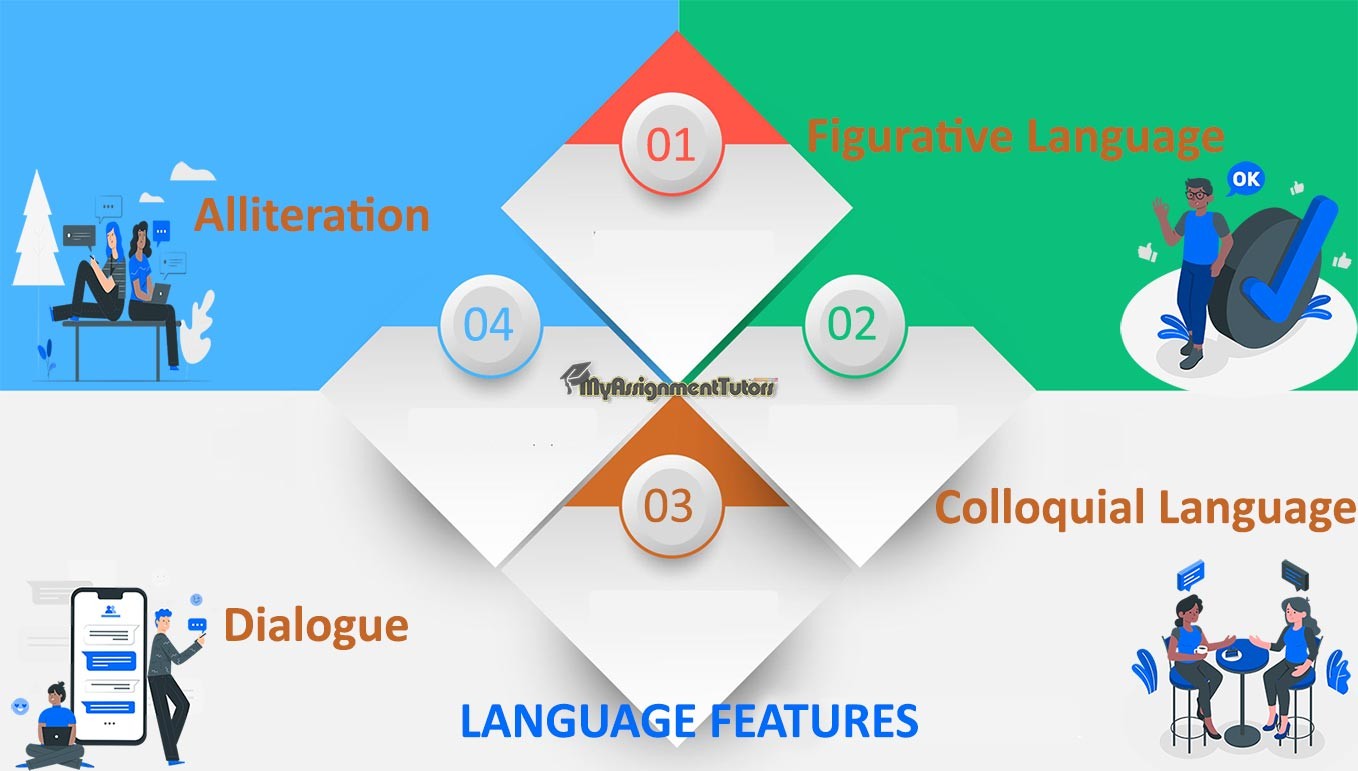Language Features Example, Techniques, and Lists
Language plays an essential role in communicating information, content, and message, therefore using its various features like simile, figurative, etc. in the right way is too important. Language Features refers to sentence structure, punctuation, noun, vocabulary, phrases, etc. used in content supports, provides meaning to the communication. Different language features used in connection shape the conversation; therefore, it is crucial to choose the right language features to define form, and construct content.
Examples of Language Features:
Figurative Language, colloquial Language, alliteration, metaphor, simile, consonance, etc. are a few examples of Language features used to communicate content, information effectively.

Figurative Language:
Colloquial Language:
Dialogue:
Alliteration:
It is generally used in poems, music, etc. It doesn't refer to the standard meaning which we communicate in a typical day to day life. It makes the content very interesting. Simile, Metaphor, Oxymoron, Hyperbole, etc. are types of Figurative Language.
This Language refers to an informal approach in Language like Relax, take a chill pill, etc. are words used in communication.
Refers to communication between two or more people, plays a vital role in drama involves statements, challenges.
In this Language first letter of the word is repeated and followed one after the other in a sentence.
List of Language Features
- Active Listening
- Adjective
- Positive Adjective
- Comparative Adjective
- Superlative Adjective
- Descriptive
- Quantitative
- Demonstrative
- Possessive
- Interrogative
- Distributive
- Articles
- Adverb
- Alliteration
- Simile
- Emotive Language
Active Listening helps in communicating information effectively and efficiently. This feature is used in conducting training sessions, counseling, seminars, etc. and allows communicators and receivers in understanding content efficiently.
Adjective describes the qualities of the noun used in the content. For Example, Ravi is a good boy, here good is the adjective of noun Ravi, explaining that the Ravi is a good boy by nature.
Quantitative feature describes the quantity of anything. It quantifies the subject.
Interrogative feature is used while asking questions like "How do you do?"
Alliteration feature is used to repeat the first letter of the word in the following terms as the first letter like "Kings Kids Keep Kicking."
Simile feature is used to compare two things, like "as" useful "as" is used to compare two things similar or dissimilar in nature.
Metaphor feature is used to describe an object, person, noun, subject, etc. differently.
Emotive Language is used to express emotion. For Example, where a person dies, emotive Language is used to express feelings.
Language Techniques
Language Techniques help in writing and understanding an essay or story in a better way. Using techniques helps in attracting the audience, making them focused on the critical areas. Few methods are as follows;
- Allusion is a technique used to refer to a person or thing indirectly. It provides partial information about the person or the object and expects the receiver to have sufficient knowledge about that to relate and understand the person referred.
- Ambiguity technique is used to create confusion as it does not provide clear instructions or information and generally gives the receiver two options to be followed.
- Idiom technique involves two or more words phrases and delivers much more information than a single word would. It is used to enhance the quality of writing, making it more productive.
- Imagery technique is a decorative technique used to create an image of the information or content in the audience's mind. It makes the receiver sense the data, imagine it, relate it with which effective and efficient information is delivered.
Conclusion
Language Features, its techniques play an essential role in communicating, delivering information, or content to the receiver. With the use of Language techniques and features in the right way, a person can provide information, the way he wants to deliver, and how he wants the audience to understand. Lastly, knowing language features and techniques is essential for succession in all the areas, whether it be student or speaker, employee, employer, etc.

